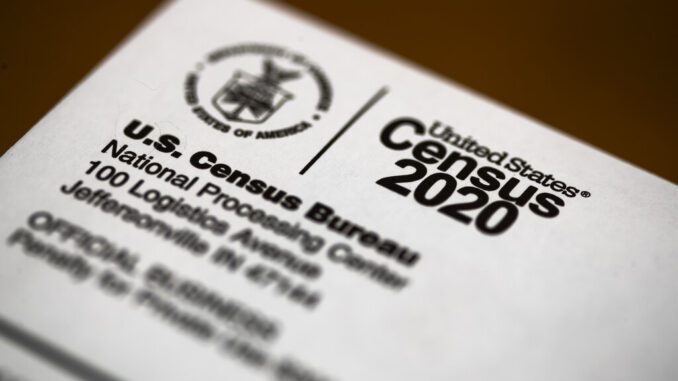
After a decade of planning and a head count that took place against the backdrop of an unprecedented pandemic, natural disasters and partisan legal battles, the U.S. Census Bureau is releasing the first numbers from the 2020 census before the end of the month. The state population count conducted every decade determines how many congressional seats and Electoral College votes each state gets.
It has been a bumpy road getting to this point. The count faced the once-in-a-century coronavirus pandemic, wildfires, hurricanes, allegations of political interference, fluctuating deadlines and lawsuits. A lot is at stake: The state population figures known as the apportionment count not only determine political power but the distribution of $1.5 trillion in federal spending each year.
Why is this done?
The U.S. Constitution requires a national head count every 10 years. The results of the state head count determine how the 435 seats in the House of Representatives are divided up among the states in a process known as apportionment. Everyone is counted, including citizens, noncitizens, children, military and civilian federal workers living abroad. While he was in the White House, President Donald Trump attempted to exclude people in the country illegally, even though the Constitution explicitly requires “counting the whole number of persons in each State.” That effort was stopped by President Joe Biden when he took office in January. Not included in the apportionment count are residents of the District of Columbia, Puerto Rico or the U.S. island areas since they don’t elect House members.
The data being released this month comprises only state population totals and the number of congressional seats each state gets. More detailed data about race, Hispanic origin and housing at smaller geographic levels will come out later this year. The legal deadline for turning in the apportionment numbers was Dec. 31, but the Census Bureau pushed back that date to no later than April 30 because of challenges caused by the pandemic and the need for more time to correct irregularities.
When do districts get drawn?
While apportionment determines how many congressional seats each state gets, redistricting is the process of actually drawing the boundaries of congressional, legislative and local districts — a politically contentious procedure that often leads to extended legal fights. The redistricting data includes counts of population by race, Hispanic origin, gender and housing at geographic levels as small as neighborhoods. The redistricting data isn’t expected to be released by the Census Bureau until August, at the earliest. The legal deadline for turning in the redistricting data was March 31, but the Census Bureau said it needed more time because of operational delays caused by the pandemic. The delay has sent states scrambling to come up with alternative plans since many will not get their data until after their legal deadlines for drawing new districts. Two states, Ohio and Alabama, sued the Census Bureau over the revised deadline. A federal judge dismissed the Ohio lawsuit, but the state is appealing.
Who stands to gain or lose?
Projections by both Election Data Services and The Brookings Institution estimate that 17 states stand to gain or lose congressional seats based on the apportionment figures. Because there are a finite 435 House representatives, congressional seats are shifted from states losing population to states gaining population. Based on estimates, Texas will gain three more seats, Florida will get two more seats and one extra seat each is expected to go to Arizona, Colorado, Montana, North Carolina and Oregon.
California, Illinois, Michigan, Minnesota, Ohio, Pennsylvania, Rhode Island and West Virginia are each expected to lose a seat. New York and Alabama are expected to be vying for the last seat in the House. What happens to that 435th seat could be the difference between New York losing two seats instead of just one and Alabama not losing a seat instead of losing one seat.
How is apportionment determined?
Ready for some math? The method for dividing up congressional seats has changed repeatedly since the first census in 1790. Some of the methods were devised by such luminaries as Thomas Jefferson, Alexander Hamilton and Daniel Webster. The current formula, known as “the method of equal proportions,” has been in place for 80 years. Using that method, all 50 states are automatically assigned at least one seat. Numbers called multipliers are calculated and then multiplied against a state’s population. The resulting series of numbers are called “priority values,” which are then ranked. From there, congressional seats No. 51 through No. 435 are assigned to states based on the ranking of their state’s priority values.
What if a state doesn’t like the results?
They sue. The past decades are filled with lawsuits filed by states that were unhappy with the apportionment results — court fights not to be confused with the ensuing squabbles between the political parties over how the districts are drawn. After the 1990 census, Massachusetts unsuccessfully sued, claiming it had lost a seat to Washington because overseas federal workers were improperly counted. After the 2000 census, Utah unsuccessfully challenged the results, arguing it had unfairly lost a seat by 856 people to North Carolina due to a methodology used by the Census Bureau and also because the state’s Mormon missionaries working abroad weren’t included in the count.




